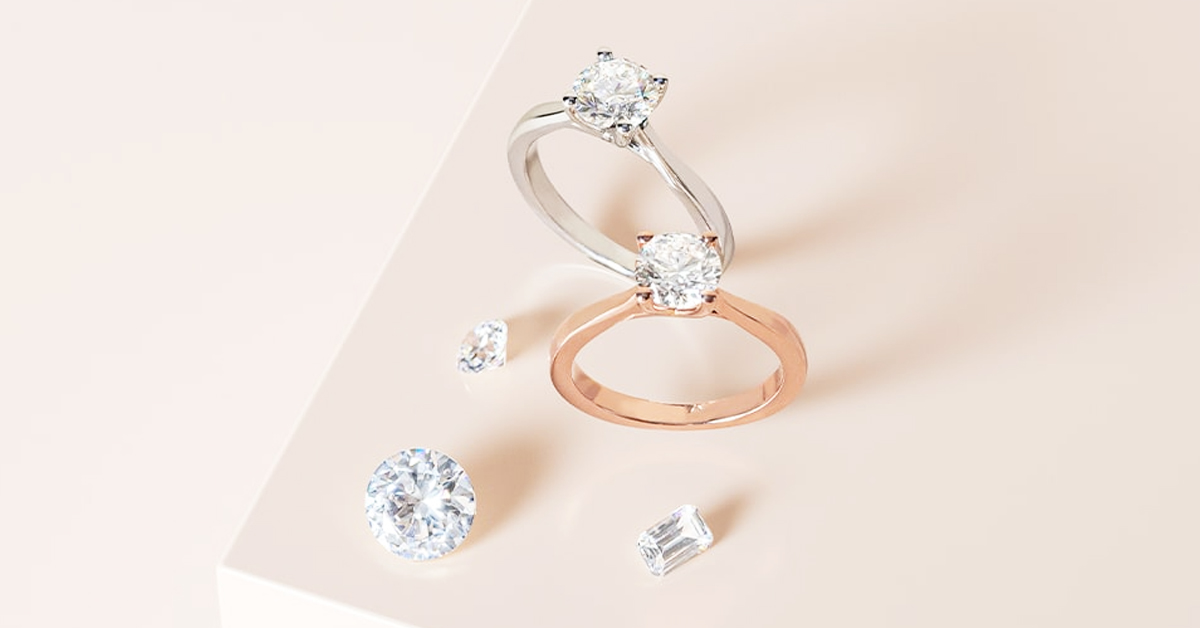Table of Contents
Introduction to Lab Grown Diamond Rings
When it comes to finding the perfect engagement ring or statement piece, lab grown diamond rings are becoming increasingly popular. With their stunning brilliance and ethical roots, these gems are redefining luxury. But what about the claws—the settings that hold these beautiful diamonds? In this article, we’ll explore everything you need to know about claws for lab grown diamond rings, from their types and benefits to maintenance tips. Let’s get started!
What Are Lab Grown Diamonds?
The Science Behind Lab Grown Diamonds
Lab grown diamonds are real diamonds created in controlled environments using advanced technology. Through processes like High-Pressure High-Temperature (HPHT) and Chemical Vapor Deposition (CVD), these diamonds are formed, mirroring the natural conditions that create mined diamonds. The result? A diamond that’s chemically and physically identical to a natural diamond but often at a fraction of the cost.
Differences from Natural Diamonds
While lab grown diamonds share the same properties as natural ones, they differ mainly in their origin. Natural diamonds take billions of years to form deep within the Earth, whereas lab grown diamonds can be produced in a matter of weeks. This fundamental difference not only impacts their price but also the ethical considerations surrounding their purchase.
Why Choose Lab Grown Diamonds?
Ethical and Sustainable Choices
One of the biggest draws of lab grown diamonds is their ethical nature. They are conflict-free, meaning they do not contribute to the environmental and social issues often associated with mined diamonds. Plus, the reduced ecological footprint makes them a sustainable choice for environmentally conscious consumers.
Affordability and Value
Affordability is another significant advantage. Lab grown diamonds typically cost 20-40% less than their natural counterparts. This means you can invest in a higher quality stone or save money for other wedding expenses—like the honeymoon!
Understanding Claws in Jewelry Settings
What Are Claws?
Claws are the prongs or metal extensions that hold a diamond in place within a ring setting. Think of them as the guardians of your precious gem, ensuring it stays secure while allowing maximum light to enter the stone, enhancing its brilliance.
Types of Claw Settings
When it comes to claw settings, there are several styles to choose from. Let’s dive into the most popular types.
Single Claw Setting
This setting features one prominent claw that holds the diamond. It’s often used for solitaire rings and provides a minimalist look. It emphasizes the diamond without distraction, letting it take center stage.
Multiple Claw Setting
In this design, multiple claws secure the diamond, offering extra security. This style is ideal for larger stones, as it provides stability while still allowing plenty of light to dance through the gem. Plus, it adds an extra element of elegance to the ring.
Choosing the Right Claw Setting for Your Lab Grown Diamond Ring
Considerations for Style and Design
When selecting a claw setting, consider your personal style and the overall design of the ring. Do you prefer something classic, or are you leaning toward a modern look? Your preferences will guide you in choosing the best setting for your lab grown diamond.
Matching Your Claw Setting to Your Lifestyle
Think about your daily activities. If you lead an active lifestyle, a claw setting that offers extra security might be the way to go. A design that protects the diamond from accidental bumps or knocks will ensure it stays beautiful for years to come.
Care and Maintenance of Claw Settings
Cleaning Your Lab Grown Diamond Ring
To keep your ring looking its best, regular cleaning is essential. A simple solution of warm, soapy water and a soft brush can work wonders. Just be sure to clean around the claws to avoid any buildup of dirt or grime.
Inspecting Claw Settings
Regularly inspect the claws for any signs of wear or loosening. If a claw appears bent or damaged, it’s best to have it checked by a professional jeweler to prevent losing the diamond.
Customer Experiences and Testimonials
Many customers have shared their positive experiences with lab grown diamond rings and claw settings. From the stunning visual appeal to the ethical benefits, wearers often report feeling a deeper connection to their jewelry. This emotional value is just as important as the diamond’s beauty!
Conclusion: Embrace the Beauty of Lab Grown Diamonds
In a world where ethical considerations are becoming increasingly important, lab grown diamond rings offer a beautiful and responsible choice. Understanding the role of claws in these settings can help you make an informed decision when selecting the perfect ring. Whether you opt for a single or multiple claw setting, the brilliance of your lab grown diamond will shine brightly for years to come. So go ahead, embrace the beauty and ethics of lab created diamonds, and wear your ring with pride!

